Small Worlds
The Nikon International Small World Photomicrography Competition recently announced its list of winners for 2010. The competition began in 1974 as a means to recognize and applaud the efforts of those involved with photography through the light microscope. Peering into the small worlds of animal, plants and minerals using many techniques and different instruments, this year's entries brought us images of crystalline formations, fluorescent body parts, cellular structures and more, valuable for both their beauty and insight. The lovely folks at Nikon were kind enough to share some of their images here with us, be sure to click the link above to see all the winners.
loading images.........please wait
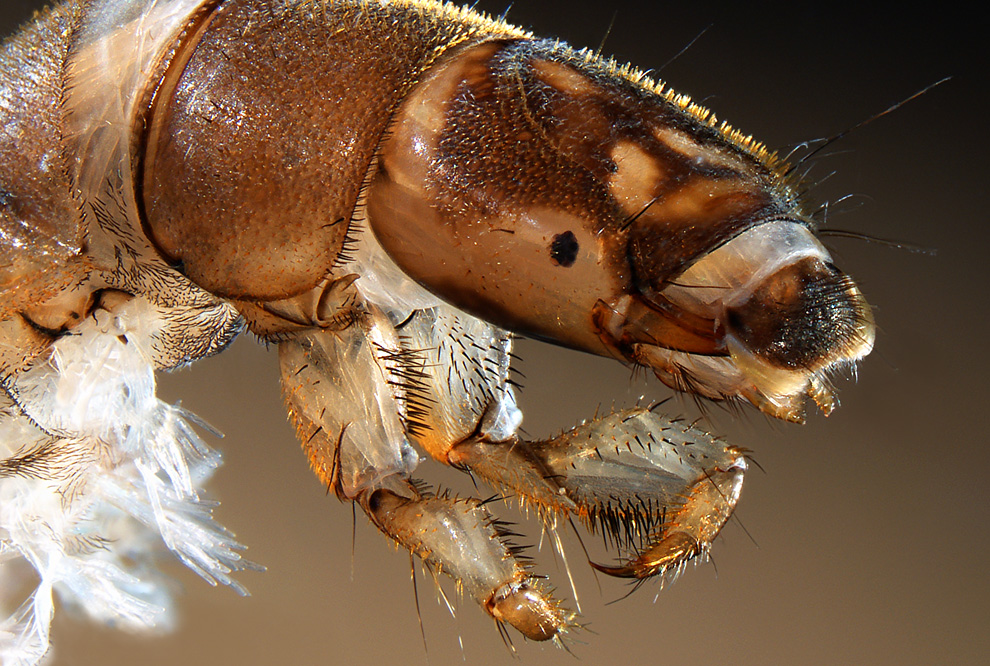
Magnified 30 times, this is an image of a Hydropsyche angustipennis (caddisfly) larva head made by Fabrice Parais, of DREAL de Basse-Normandie in Caen, France. (Courtesy of Nikon Small World)

2
This 5th Place image of a Strelitzia reginae (bird of paradise) seed magnified 10 times comes from Viktor Sykora of the Institute of Pathophysiology, First Medical Faculty, Charles University in Prague, Czech Republic. This image was made with a stereomicroscopy technique called darkfield illumination. (Courtesy of Nikon Small World) #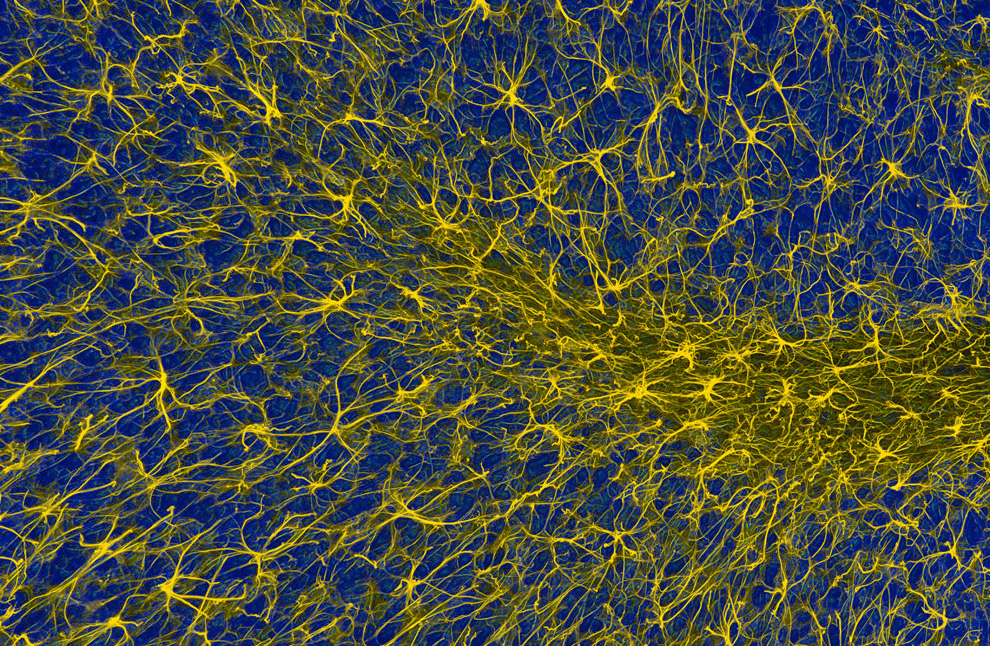
3
Magnified 400 times, this is a 2-Photon fluorescence image of glial cells in the cerebellum. Glial cells provide support for the brain's neurons. This image was made by Thomas Deerinck of the National Center for Microscopy and Imaging Research, University of California, San Diego. (Courtesy of Nikon Small World) #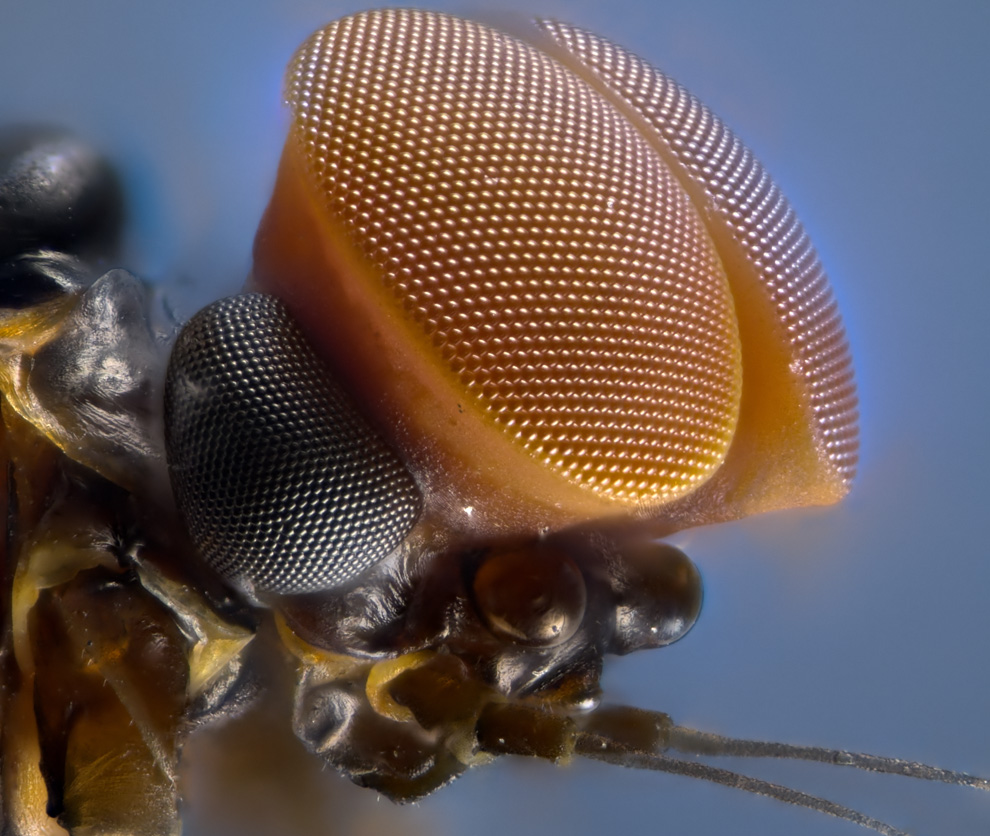
4
The turbinate eyes of male mayfly magnified 10 times. Image made by Laurie Knight of Tonbridge, Kent, UK. (Courtesy of Nikon Small World) #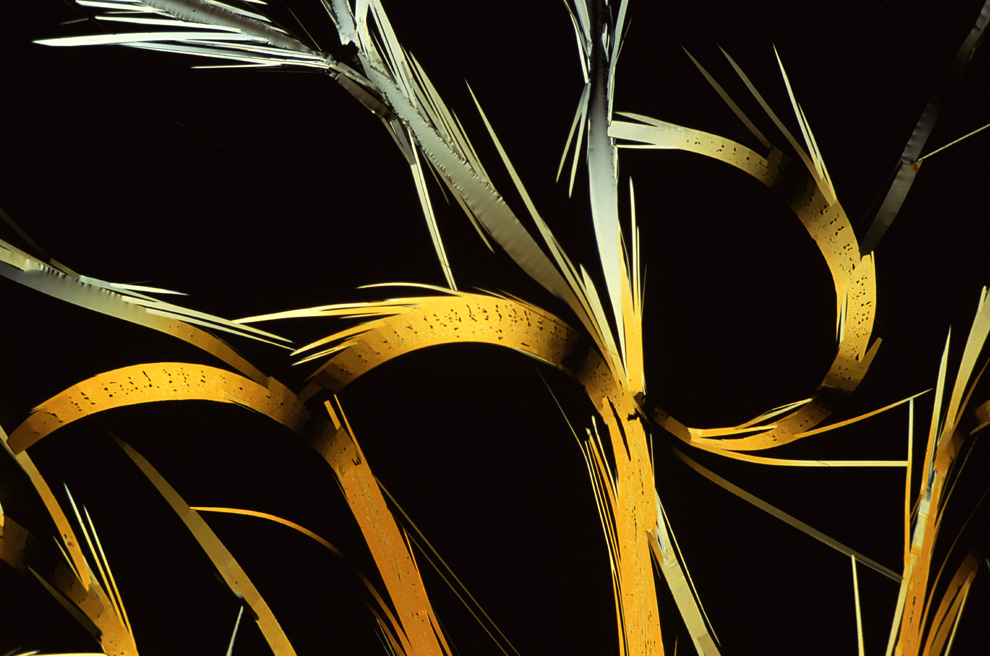
5
Seen at a magnification of 63x, this is an image of recrystallized sulfur made by Dr. Edward Leighman Gafford from Ventura, California. (Courtesy of Nikon Small World) #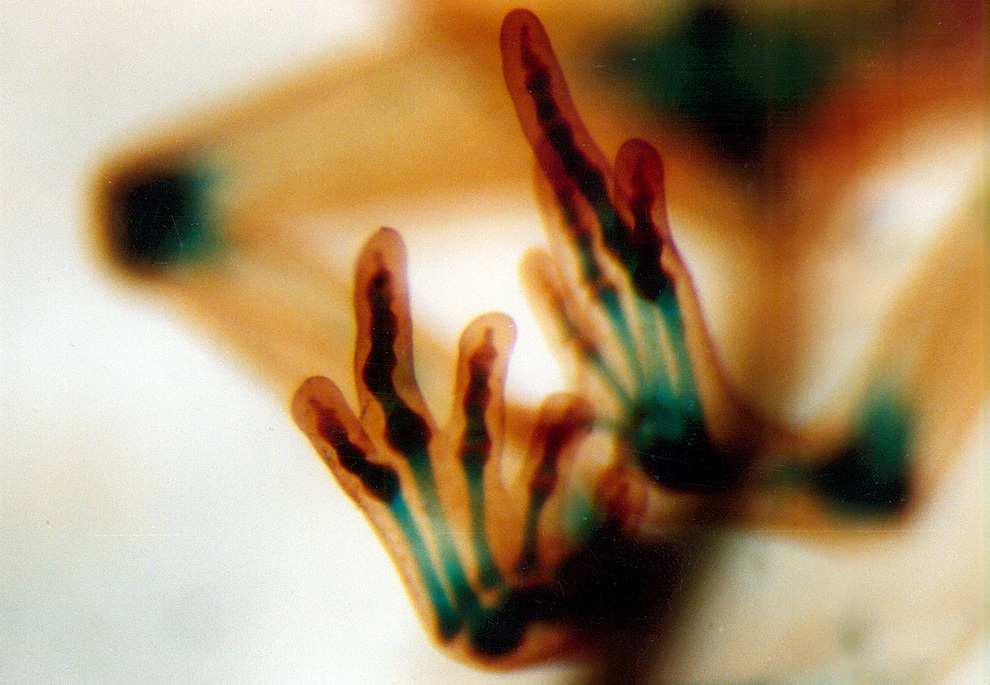
6
Tiny bones are seen inside a the limbs of a developing Eleutherodactylus coqui (frog), magnified 20 times. Image made by Dr. Mike Klymkowsky of MCD Biology, University of Colorado, Boulder in Boulder, Colorado. (Courtesy of Nikon Small World) #
7
Two human cancer cells seen just before they divide into four cells, viewed at 100x magnification. This image of Telophase HeLa (cancer) cells expressing Aurora B-EGFP took 11th place and was made by Dr. Paul D. Andrews of the University of Dundee in Dundee, Scotland. (Courtesy of Nikon Small World) #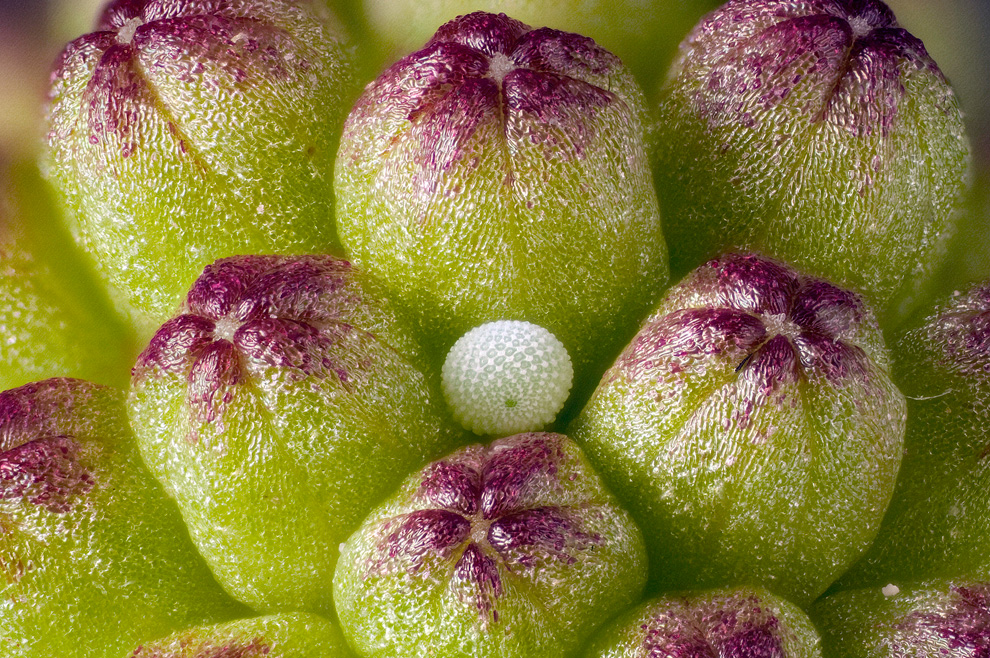
8
A single egg from a Hemiargus isola (Reakirt's blue butterfly) rests on Mimosa strigillosa (pink powderpuff) buds, viewed at 6x magnification. Image made by David Millard from Austin, Texas. (Courtesy of Nikon Small World) #
9
This 15th place image is of crystals of divaricatic acid extracted from Evernia divaricata (a lichen), which had been recrystallized from acetone and imaged at 10x magnification in polarized light. Image made by Dr. Ralf Wagner from Dusseldorf, Germany. (Courtesy of Nikon Small World) #
10
Magnified 100 times, a Mirabilis jalapa (four o'clock flower) stigma with pollen attached is seen. This 16th place image was made with epifluorescence and 3D reconstruction by Dr. Robert Markus Institute of Genetics, Biological Research Center of the Hungarian Academy of Sciences in Szeged, Hungary. (Courtesy of Nikon Small World) #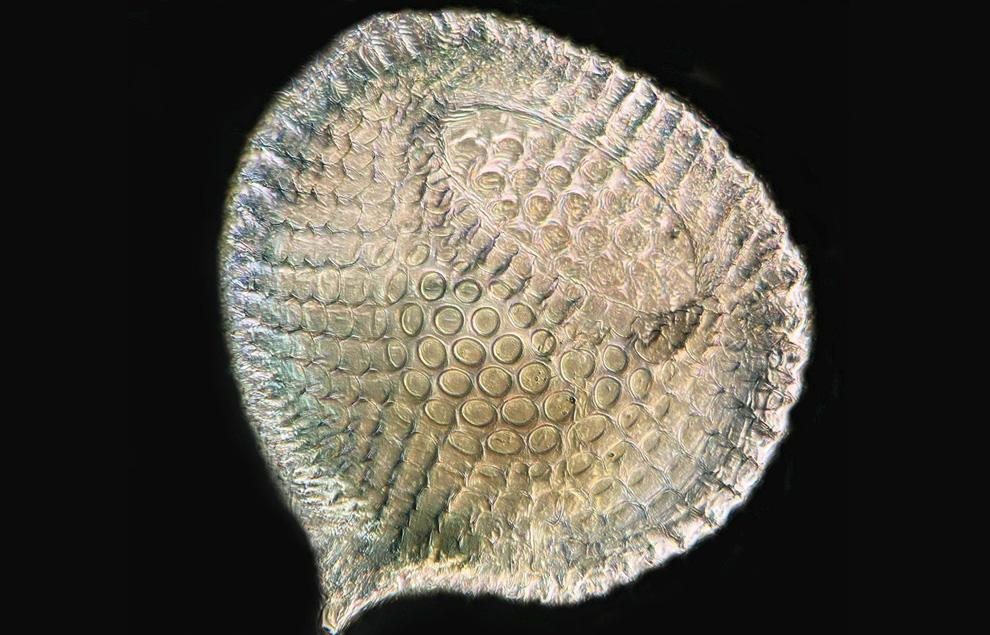
11
A radiolarian, a type of zooplankton, is seen magnified 250x in this image made by Raymond Sloss of the Northamptonshire Natural History Society in Northampton, UK. (Courtesy of Nikon Small World) #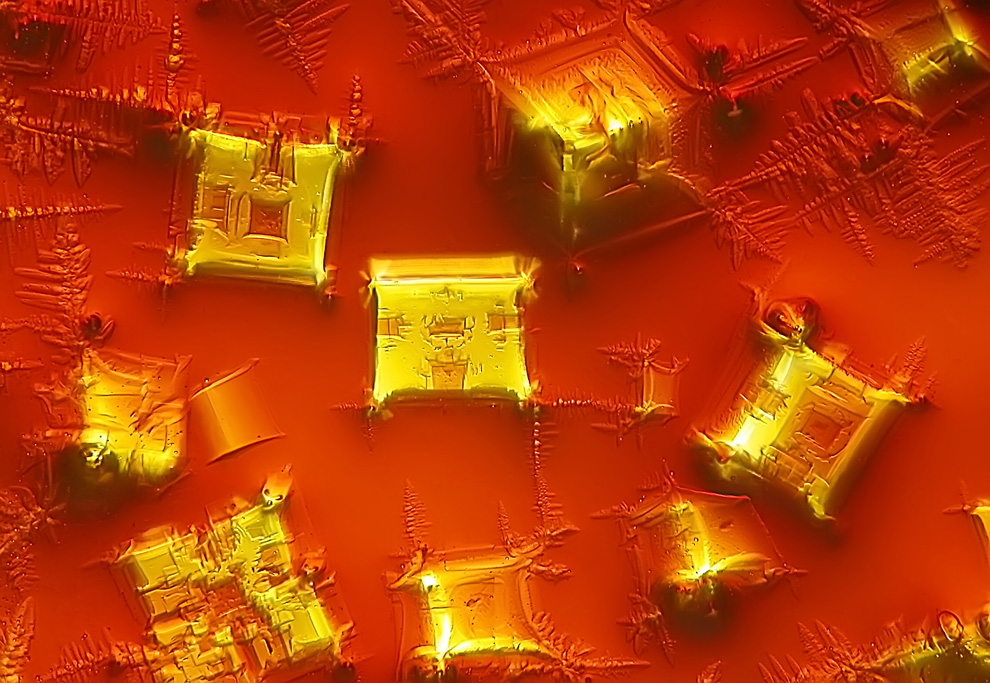
12
This 10th place winner is an image of crystallized soy sauce magnified 16 times, seen in reflected and transmitted light. Image made by Yanping Wang of the Beijing Language and Culture University in Beijing, China. (Courtesy of Nikon Small World) #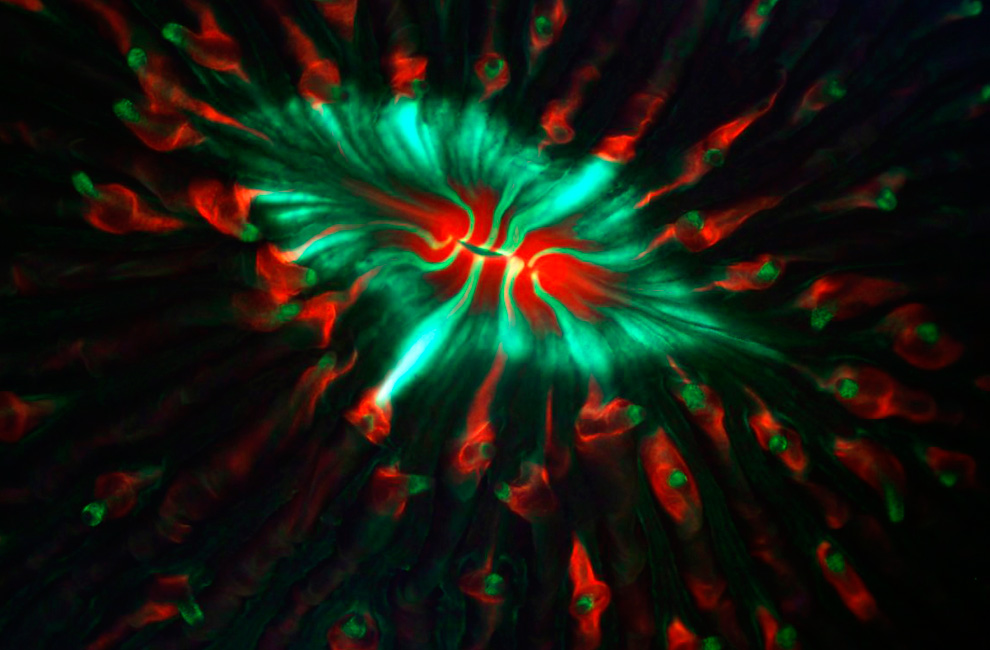
13
James Nicholson of the NOAA NOS NCCOS Coral Culture and Collaborative Research Facility in Charleston, South Carolina made this magnification 6x image of Fungia sp., or mushroom coral, showing natural auto fluorescent proteins around its mouth. (Courtesy of Nikon Small World) #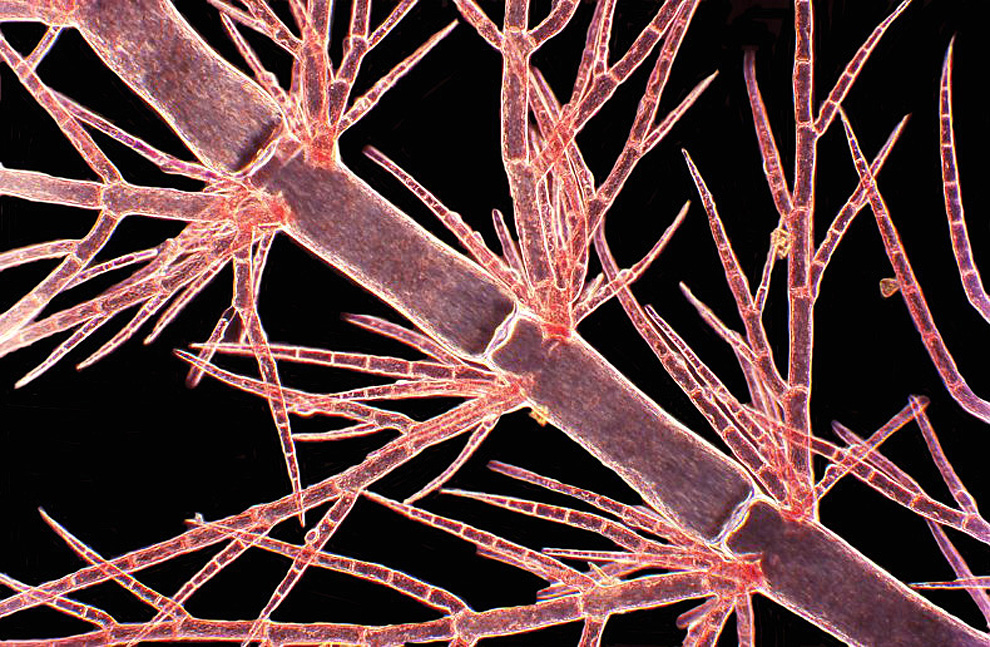
14
Magnified 250 times, this is a view of Scagelia sp. (red algae) made by Dr. Arlene Wechezak from Anacortes, Washington, USA. (Courtesy of Nikon Small World) #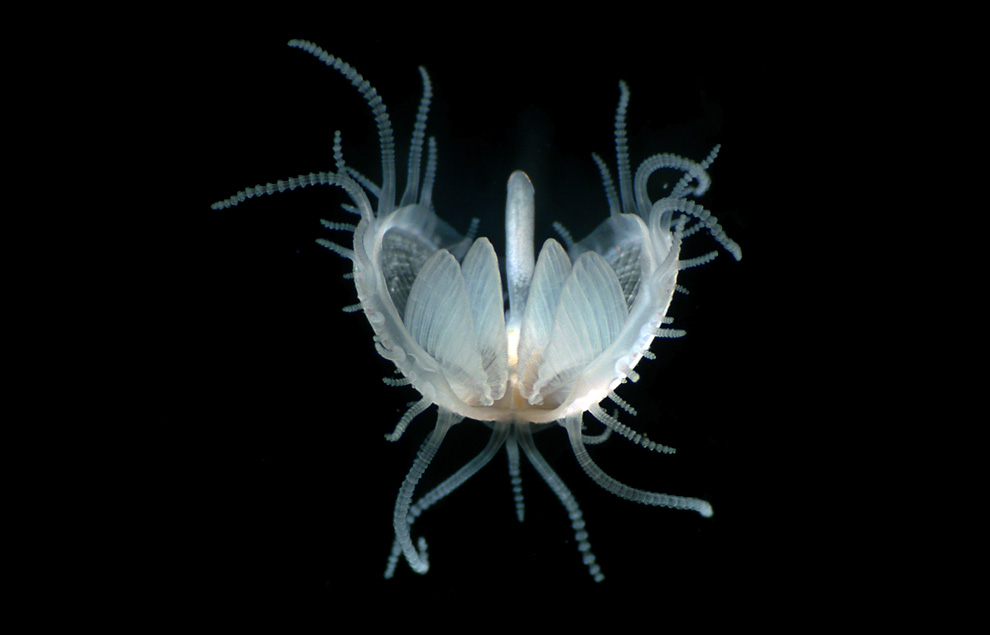
15
Dr. Gregory Rouse took 12th Place with this darkfield image of a juvenile bivalve mollusc, (Lima sp.), magnified 10 times. Dr. Rouse is from the Scripps Institution of Oceanography in La Jolla, California. (Courtesy of Nikon Small World) #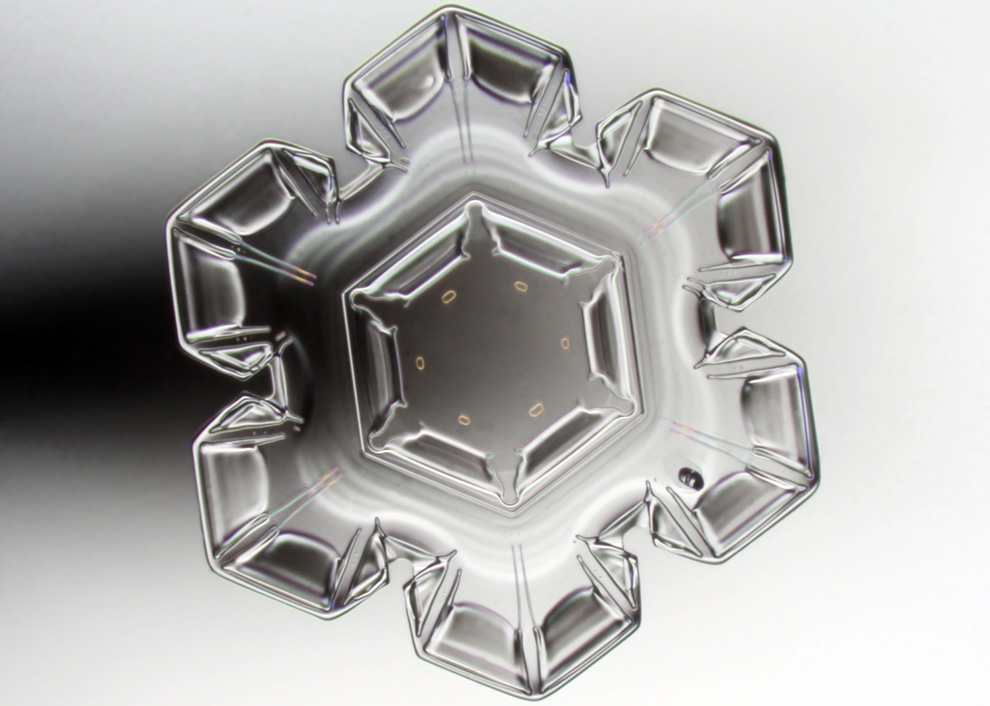
16
Pekka Honkakoski of Sonkajarvi, Finland brings us this image of a snow crystal magnified 40 times. (Courtesy of Nikon Small World) #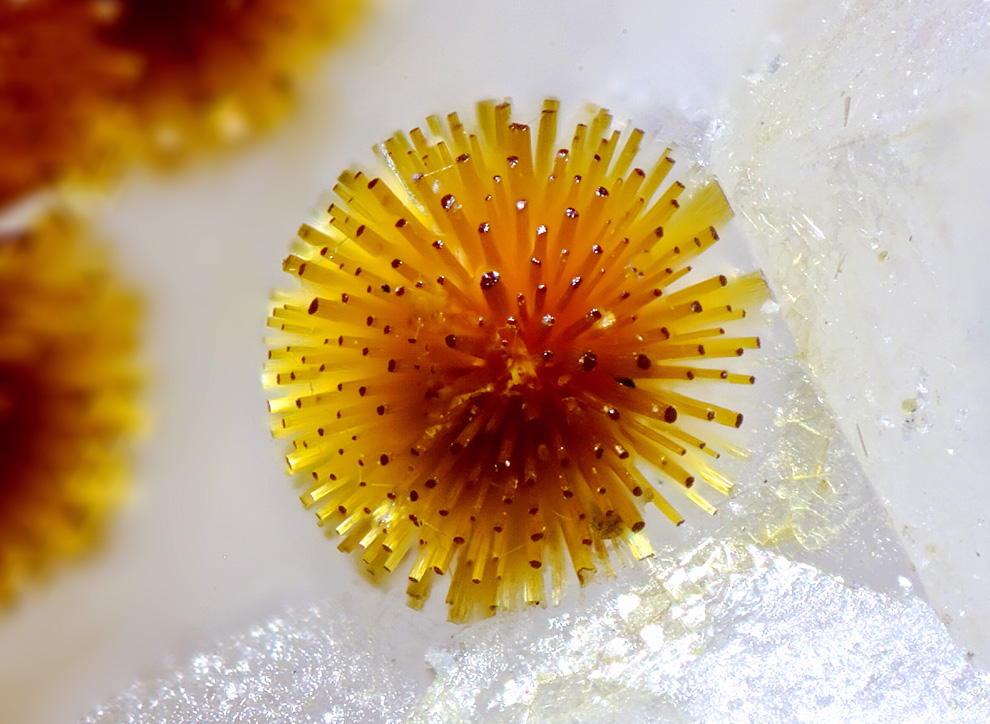
17
This image of a radial crystal spray of a phosphate mineral called cacoxenite viewed at at 18x magnification took 8th Place. The image was made by Honorio Cocera-La Parra of the Geology Museum, University of Valencia in Benetusser, Valencia, Spain. (Courtesy of Nikon Small World) #
18
Dr. Duane Harland took 9th place with his flourescent image of Ctenocephalides canis (flea), viewed at 20x magnification. Dr. HArland is with AgResearch Ltd. in Lincoln, New Zealand. (Courtesy of Nikon Small World) #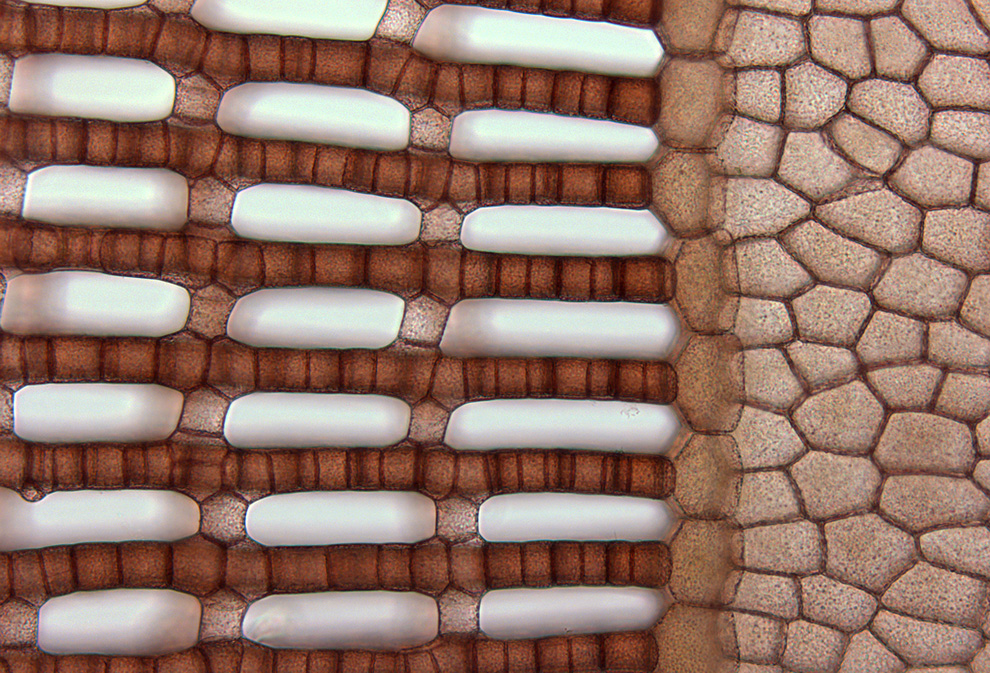
19
This brightfield image shows part of the structure of living specimen of Martensia sp. (red seaweed), viewed at 40x magnification. This 6th Place image was made by Dr. John Huisman of Murdoch University, School of Biological Sciences and Biotechnology in Murdoch, Australia. (Courtesy of Nikon Small World) #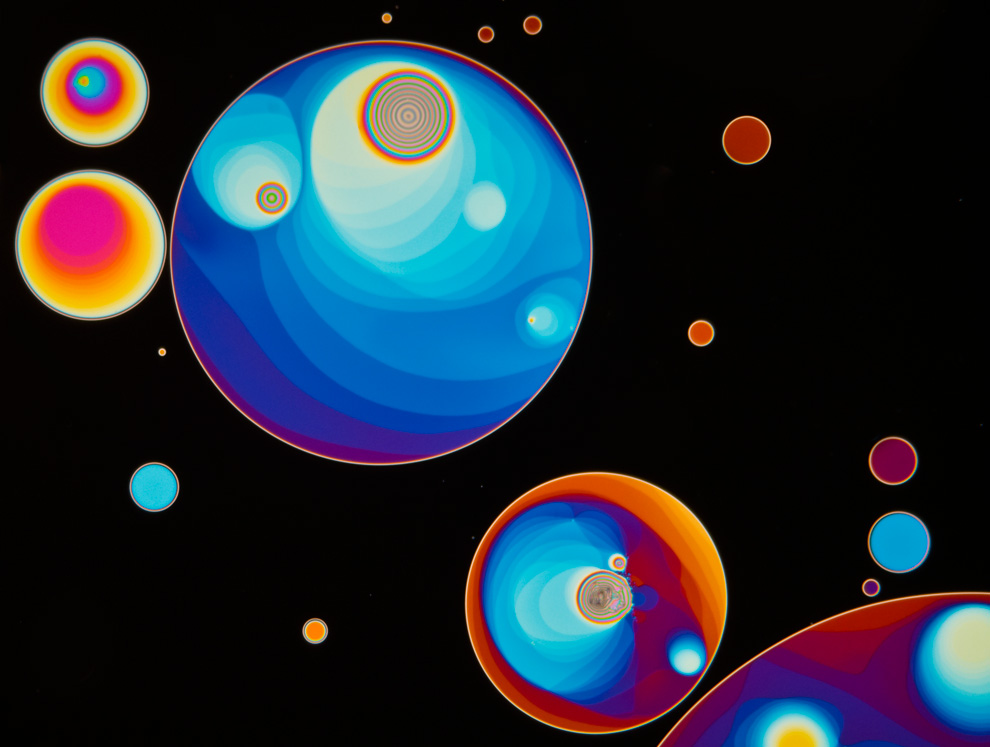
20
Patterns of light are seen in soap film, magnified 150 times in this 18th place image by Gerd Guenther from Dusseldorf, Germany. (Courtesy of Nikon Small World) #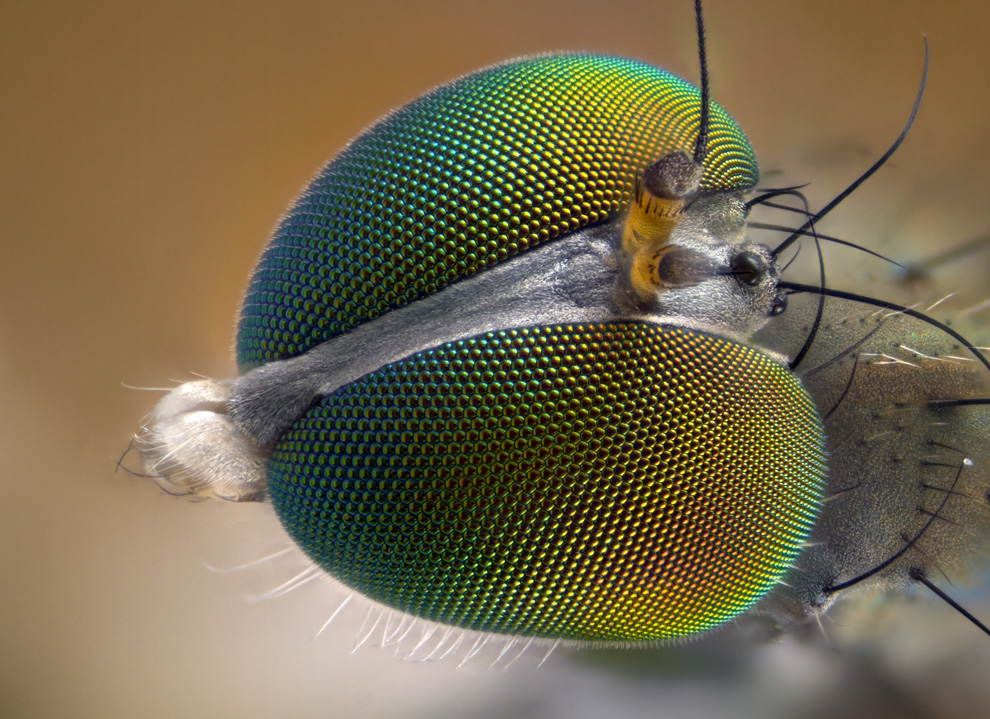
21
Magnified 10 times, a view of Dolichopodid sp. (fly) eyes made by Laurie Knight of Tonbridge, Kent, UK. (Courtesy of Nikon Small World) #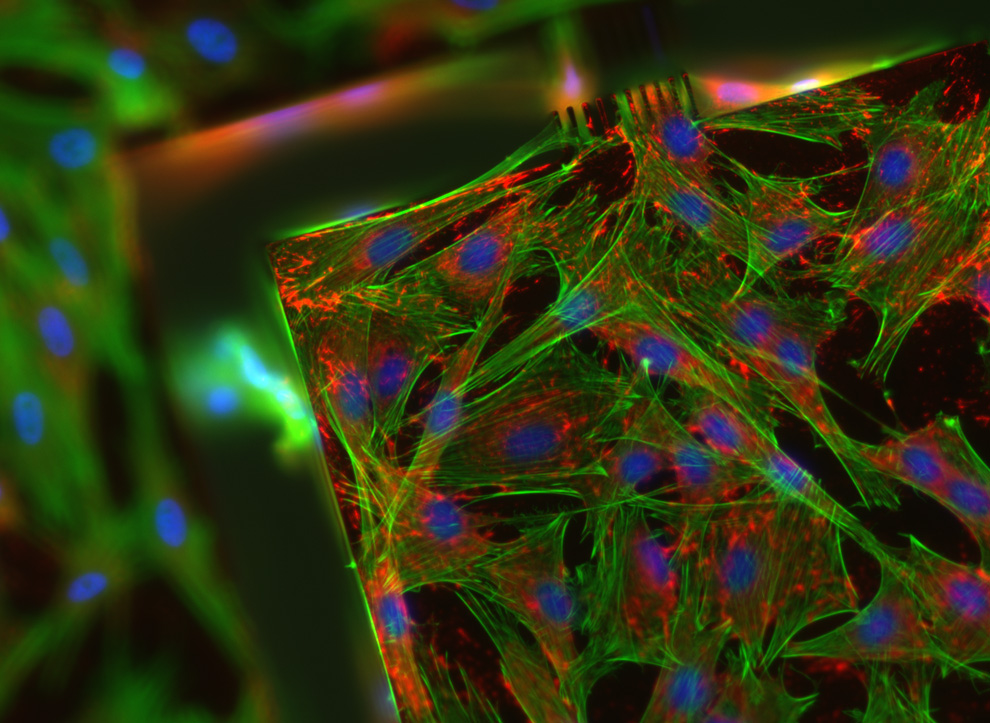
22
Subcutaneous rat cells called fibroblasts on a silicon microactuator magnified 20 times. Image made by Rafael Pennese of the Ecole Polytechnique Fédérale de Lausanne in Lausanne, Switzerland. (Courtesy of Nikon Small World) #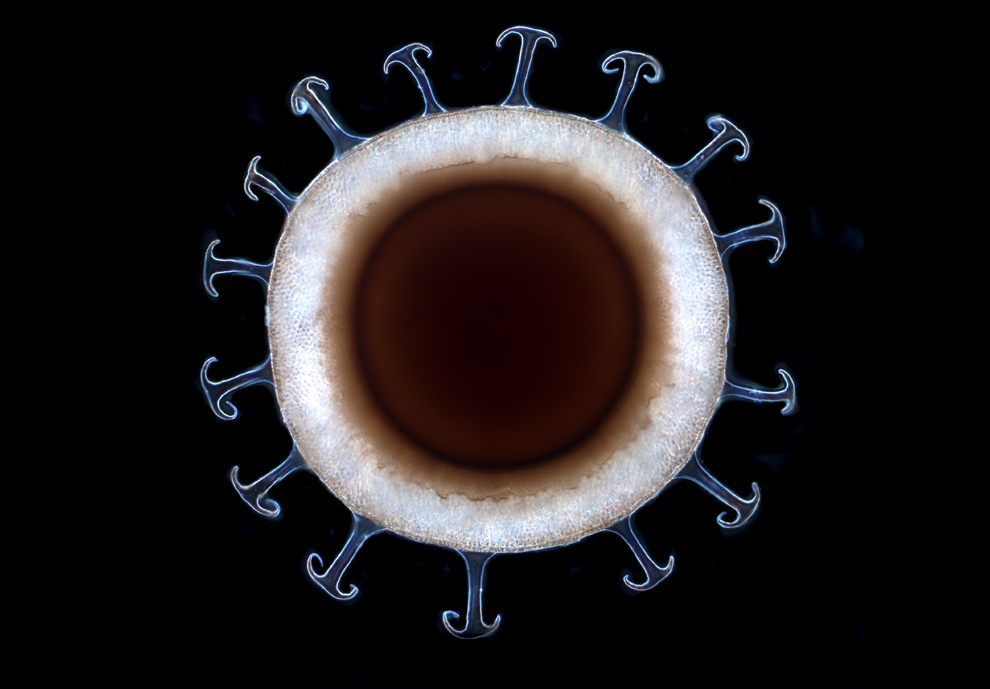
23
A Bryozoa, a tiny aquatic filter-feeder is seen at 20x magnification. Image made by Jocelyn Cheng of the Rochester Institute of Technology in Rochester, New York. (Courtesy of Nikon Small World) #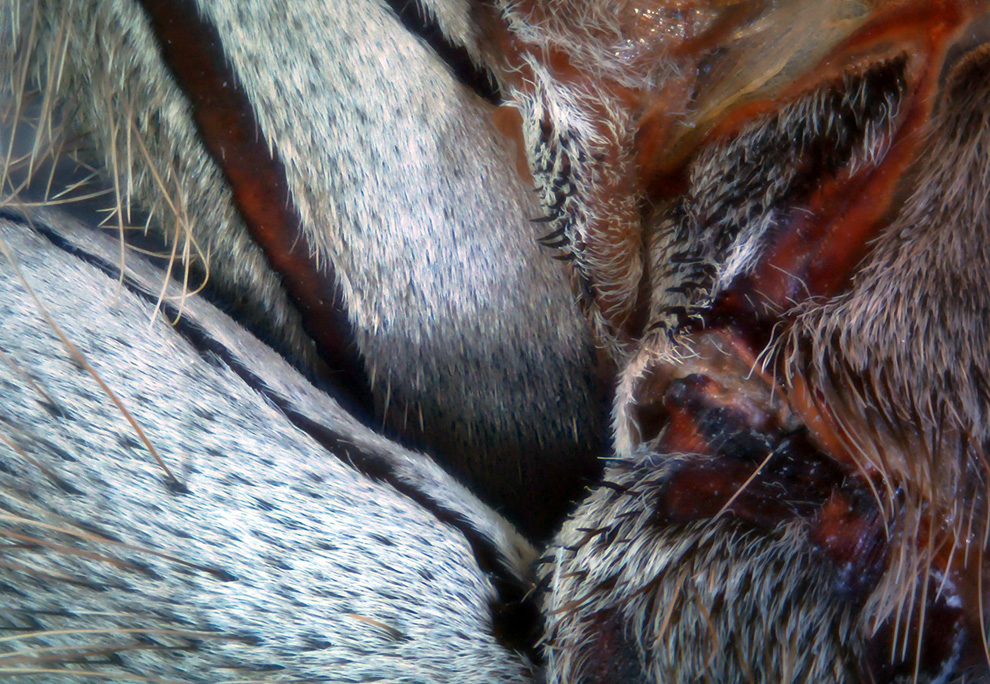
24
A close-in view of the basal leg segments of a Heteroscodra maculata (ornamental baboon tarantula) magnified 40 times. Image made by Tyrel Pinnegar from Nanaimo, Canada. (Courtesy of Nikon Small World) #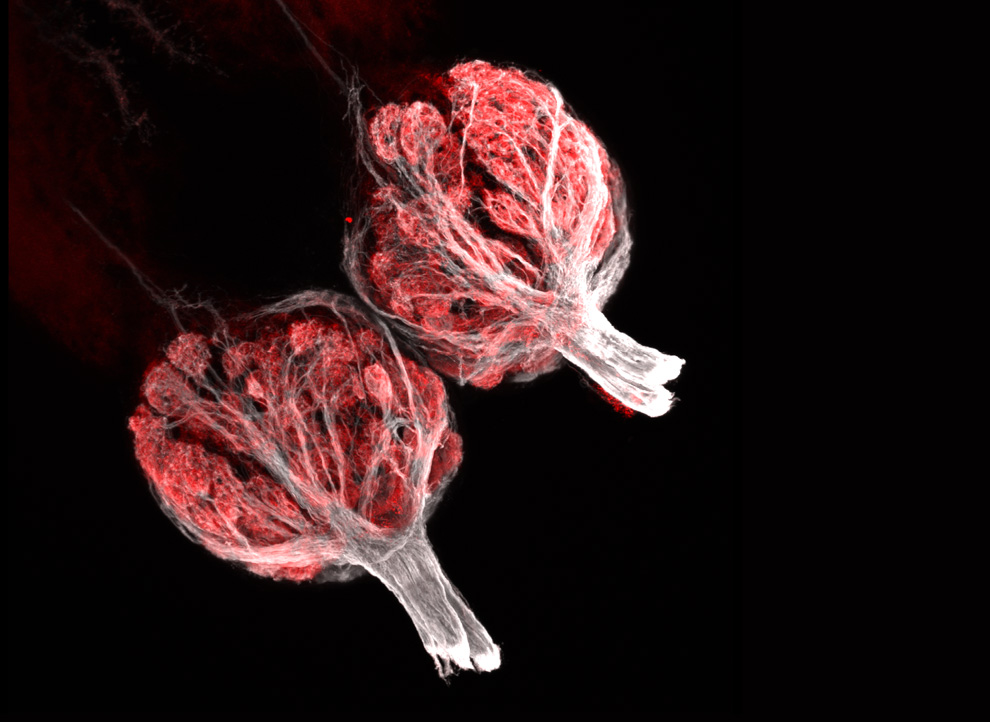
25
This 3rd Place-winning entry is a view of the olfactory bulbs of a Zebrafish, viewed at a magnification of 250x. Image made by Oliver Braubach from the Department of Physiology & Biophysics, Dalhousie University in Halifax, Canada. (Courtesy of Nikon Small World) #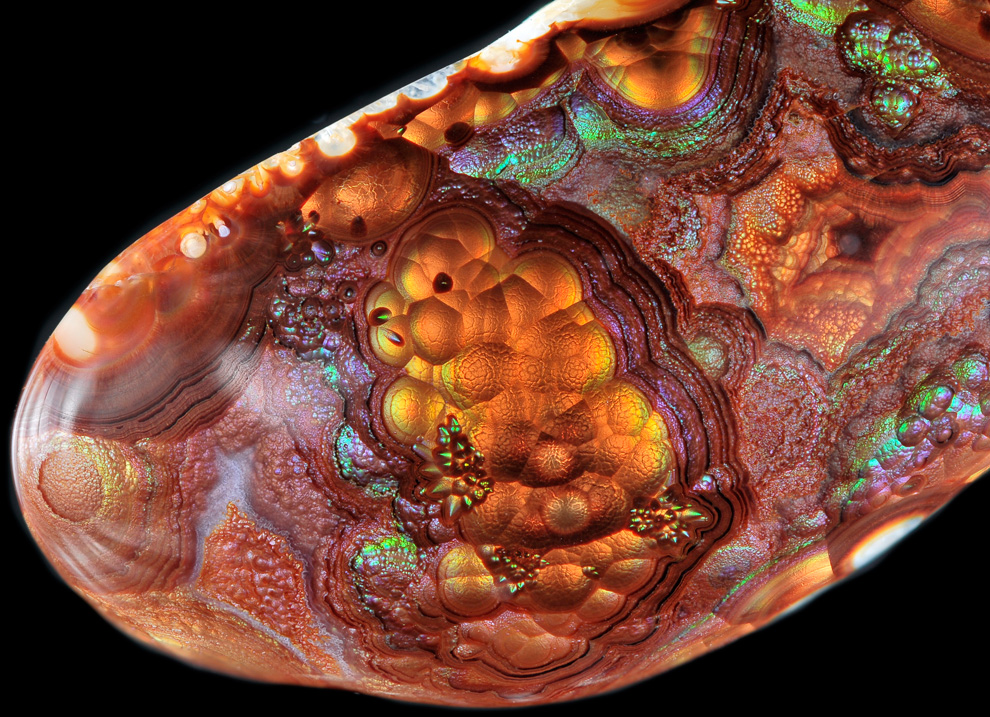
26
A polished piece of Mexican fire agate, viewed at a magnification of 4x, imaged by Thomas Shearer of ColdStone Photography, LLC in Duluth, Minnesota. (Courtesy of Nikon Small World) #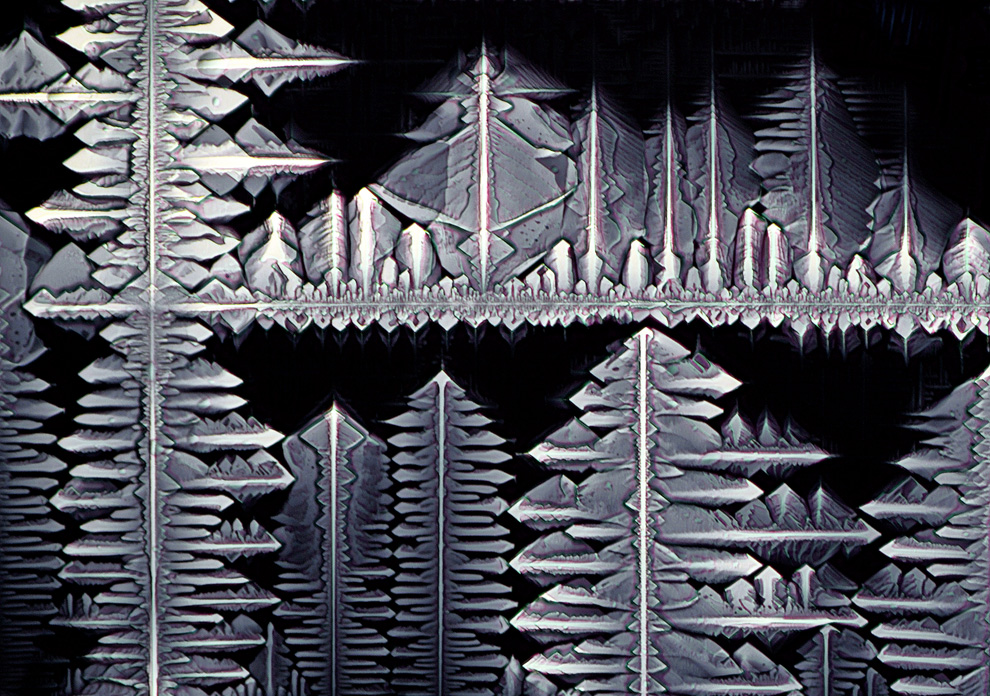
27
Crystals of potassium ferricyanide are magnified 40 times in this image made by Stefan Eberhard of the University of Georgia, Complex Carbohydrate Research Center in Athens, Georgia. (Courtesy of Nikon Small World) #safeer
www.keralites.net |
__._,_.___
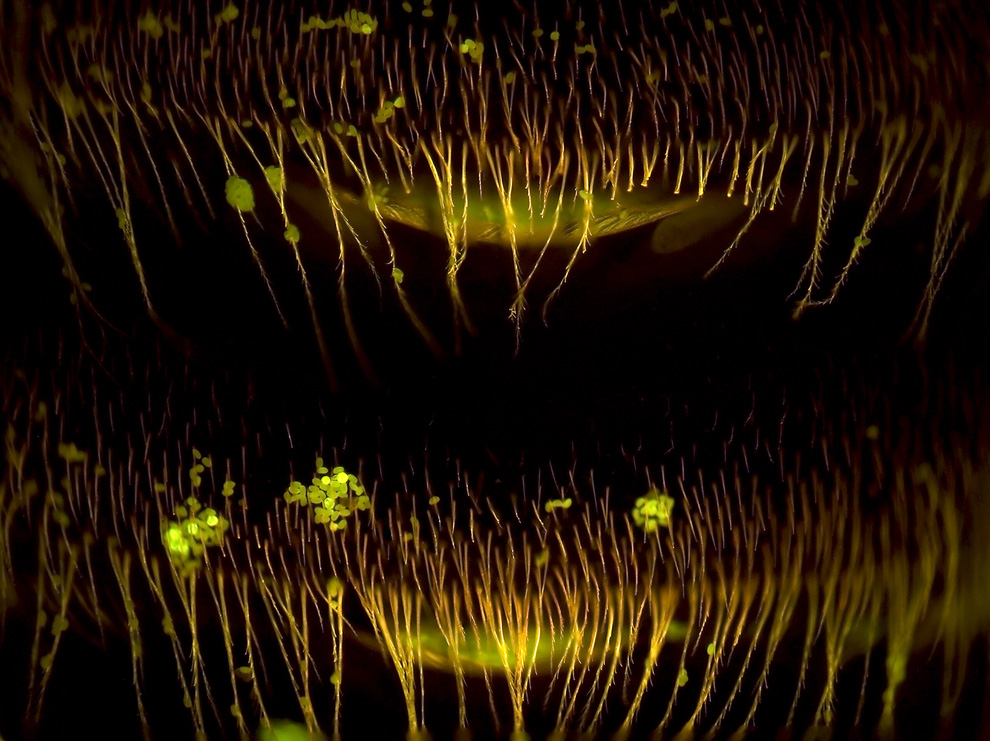
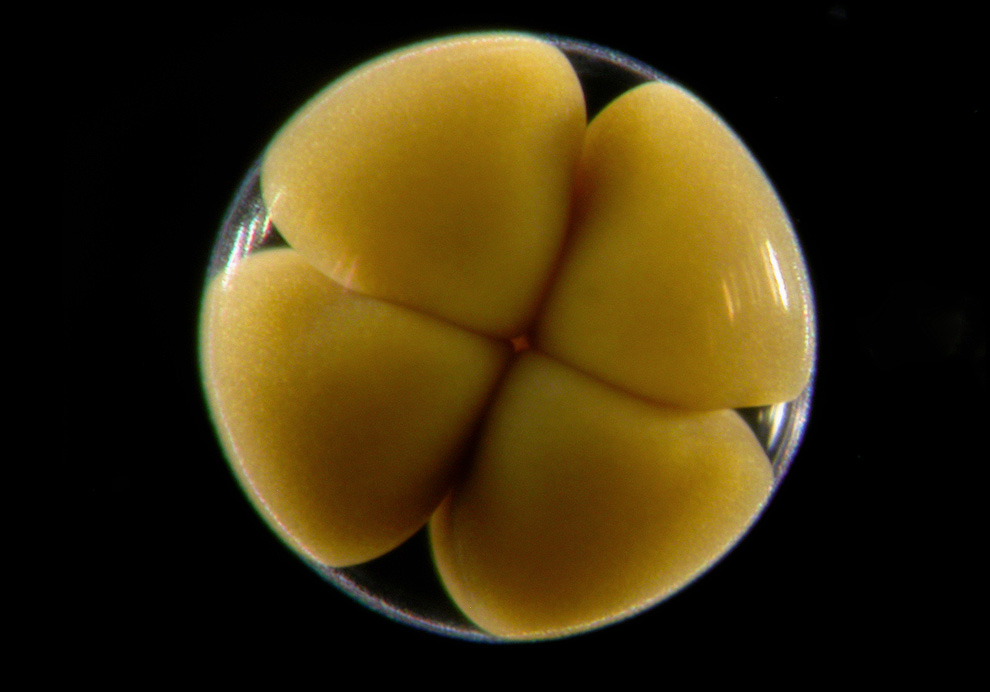





No comments:
Post a Comment